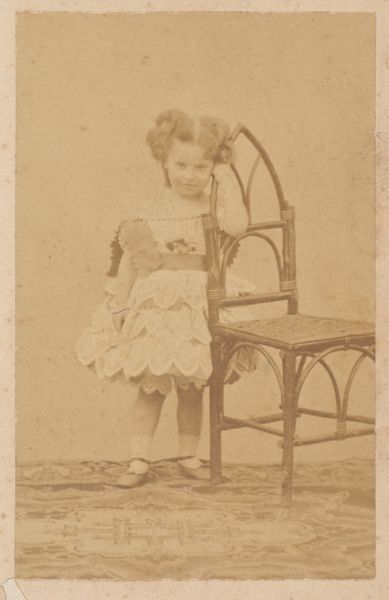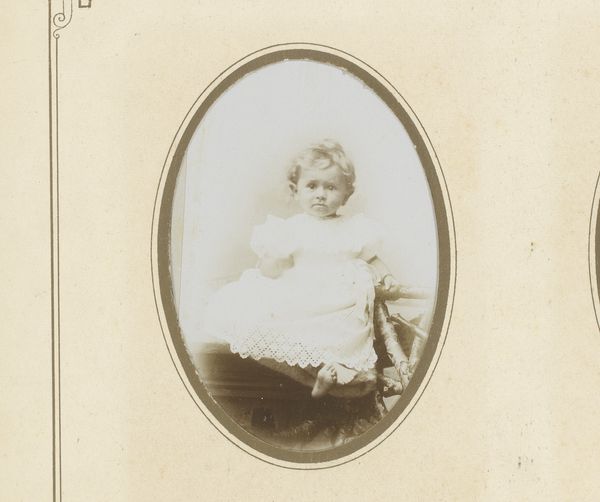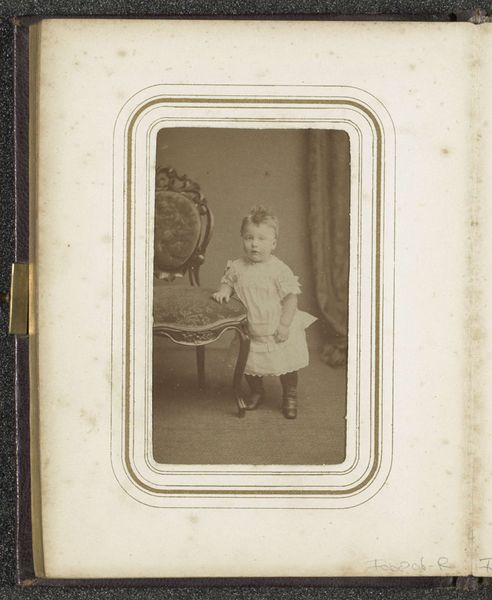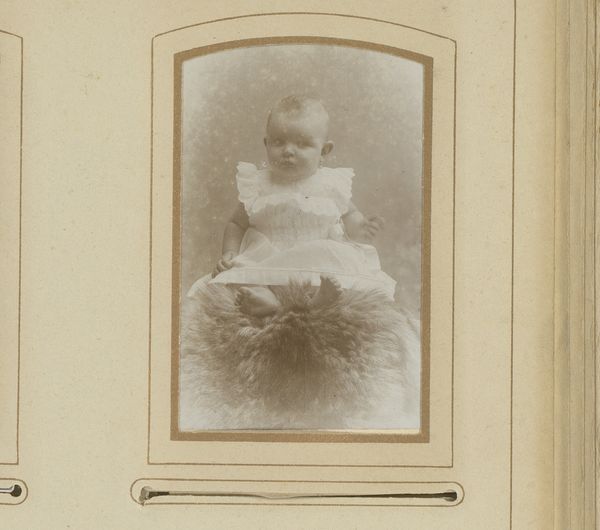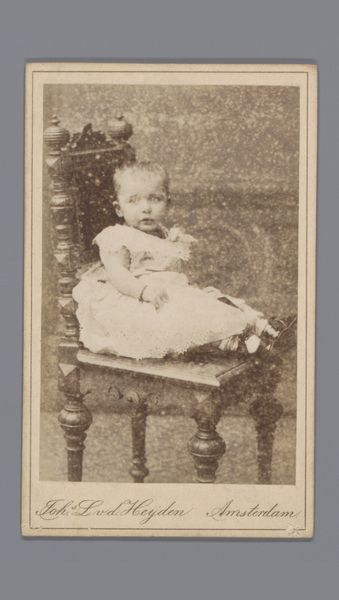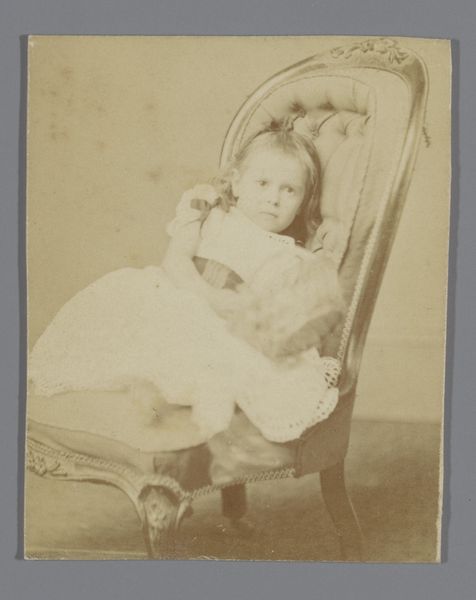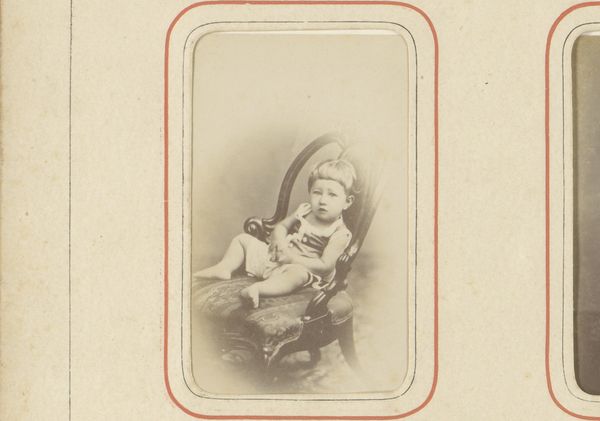
photography
#
portrait
#
photography
Copyright: Public Domain
Here we see a photograph by Pierre-Louis Pierson, titled "Chaise rustique (autre)." It presents a young girl posed beside a rustic chair. Consider the chair itself; it’s more than a prop. Chairs have long been associated with authority and status, from royal thrones to ecclesiastical seats of power. Yet here, the rustic design speaks of a yearning for simplicity, a return to nature idealized in the Romantic era. This juxtaposition creates a tension—a child, symbol of innocence, framed by an object that represents societal power, albeit in a softened, pastoral guise. This interplay reminds me of the cyclical nature of symbols. The chair, once a symbol of command, is here softened and domesticated, yet its underlying suggestion of power remains, subtly influencing our perception. Such cultural echoes reveal how collective memory and subconscious processes shape both the creation and interpretation of images. The chair's presence is a powerful force, engaging us on a deep, subconscious level. It is a cycle of reinvention, where symbols resurface, evolve, and take on new meanings.
Comments
No comments
Be the first to comment and join the conversation on the ultimate creative platform.
